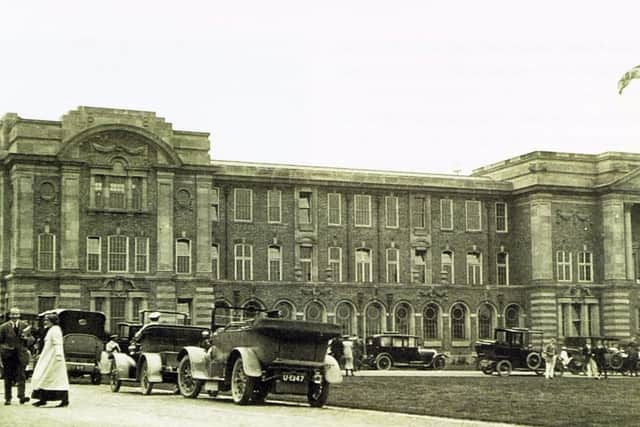The haunted history of this former Leeds war hospital


Barely a year after it was built on the edge of Beckett Park and opened as a teacher training college, war was declared and its spacious buildings were requisitioned by the military.
The main building, now known to students as James Graham, became 2nd Northern General Hospital, and today's Macaulay Hall served as the morgue.
Advertisement
Hide AdAdvertisement
Hide AdAround 57,000 soldiers - both officers and men - were treated here during World War One for injuries sustained at the Front, and 226 of them died on the site.


Unsurprisingly, the campus's macabre past has given rise to a selection of spooky stories that have been handed down by generations of students and staff.
Our reporter Nina Swift recently visited Leeds Beckett for an evening ghost tour run by resident paranormal expert Ian Crossland.
Ian was once told by a security guard who was locking up the James Graham Building that he had seen all the doors on a length of corridor open and close, one after the other.
Advertisement
Hide AdAdvertisement
Hide AdWhile in the basement of Macaulay, where the morgue was located, cleaners have reported hearing the sounds of conversations while alone in the building after hours.


Another 'haunted' spot on campus is a former mansion now known as The Grange, where the Beckett family, who owned a bank in Leeds, once lived.
One of their servants is reputed to have thrown himself down the staircase due to a broken heart, and his presence is still felt in the building today. The Grange regularly attracts professional ghost hunters.
At its height, the pioneering hospital was highly regarded for its work in orthopaedics, dentistry and plastic surgery as surgeons experimented on the vast range of challenging war wounds that were presented to them. Advances were made in artificial limb technology, and races were held in the grounds between men who had lost legs.
Advertisement
Hide AdAdvertisement
Hide AdIt wasn't all successful recovery and recreation - letters written by nurses at the hospital reveal they dreaded the smell of the 'jaw ward', where soldiers with some of the worst facial injuries would have been treated.


In 1915, the hospital was visited by King George V and the US ambassador, Dr Walter Page.
After the war, the buildings were returned to the teacher training college, and the hospital services were moved to a converted mansion, Gledhow Grove in Chapel Allerton, which later became Chapel Allerton Hospital.